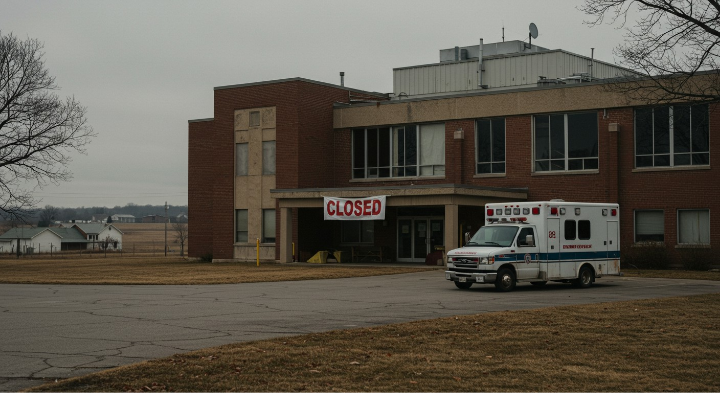Medicaid Cuts Shake Hospitals and States
- Oct 6
- 3 min read

Hospitals face an uncertain fiscal future following President Donald Trump’s signing of the One Big Beautiful Bill Act, also known as the "megabill". This law will take a $340 billion bite out of hospital budgets over the next decade to fund tax cuts and other government priorities. Crucially, the most painful health care cuts are delayed until 2028. This delay has caused shock but also provides time to fight back.
The most significant portion of this reduction comes from Medicaid, the state-federal insurance program for low-income people. Overall, the law cuts more than $1 trillion in health spending over the next decade, with the majority coming from Medicaid. In addition to provisions like new work requirements for some Medicaid recipients, the bill targets financial tools states use to increase Medicaid payments: the reduction of provider tax rates (from 6% to 3.5%) and state-directed payments.
Hospitals and their armies of lobbyists in Washington are gearing up for a multiyear fight to repeal the GOP cuts. The delay until 2028 allows sufficient time to persuade lawmakers. Furthermore, 2028 is a presidential election year, which represents significant political leverage. Hospital executives are encouraged by Congress's history of delaying or repealing burdensome parts of major legislation, as happened with the "Cadillac" insurance plan tax and the medical device tax in the Affordable Care Act (ACA).
If lobbyists succeed in undoing these cuts, the cost of the One Big Beautiful Bill Act would increase significantly, leading to $3.4 trillion in deficit spending over a decade. Budget experts warn this could expose Americans to higher interest rates and slower economic growth. However, hospital executives—who have predicted that the cuts could threaten the survival of some facilities—are willing to take that risk.
Although massive federal cuts are on the horizon, several states are already implementing reductions in Medicaid spending due to recession fears or economic slowdowns and the end of emergency federal funds. Unlike the federal government, states are generally unable to weather economic downturns without cutting major programs, with Medicaid being among their largest expenditures.
North Carolina: The Medicaid agency instituted a minimum 3% reduction in pay for all providers treating Medicaid patients starting October 1, with 8% to 10% cuts for primary care doctors and specialists, respectively. These cuts, which are unrelated to the new federal law, have raised fears of an immediate loss of access to care. A clear example is the struggle faced by families like Alessandra Fabrello, who fights to find therapy and nursing providers for her son (Ysadore Maklakoff) with a rare brain condition, and now faces a pay cut as a caregiver. North Carolina alone is projected to lose about $23 billion in federal Medicaid dollars over the next decade.
Idaho: State leaders responded to an $80 million budget shortfall by cutting Medicaid pay rates by 4% across the board. This has raised concerns about the ability of nursing homes and small hospitals (those with 25 beds or less) to stay afloat, risking the closure of essential service units like labor and delivery or behavioral health.
Advocates warn that facilities, especially those in rural areas, which rely heavily on Medicaid and Medicare payments, are the most vulnerable. Additionally, the new law imposes administrative barriers (such as work reporting requirements), which will generate significantly higher administrative costs for states, as seen in Georgia, where the administrative cost doubled the spending on actual Medicaid coverage. Some analyses suggest that these cuts, if maintained, could cause the death of 51,000 people each year.
Despite promises of a $50 billion relief fund for rural hospitals, the consensus is that it is unlikely to fully offset the losses, intensifying pressure on legislators to intervene before 2028.










Comments